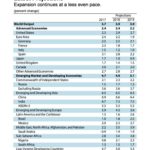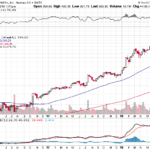Opening Day
Today is Opening Day at Saratoga Race Track, one of my favorite places to go. I am reposting this from the same day a year ago because it discusses why I enjoy horse racing and why horse racing is different than investing.

One of my favorite hobbies is horse racing. The Sport of Kings. So-called because only a King can afford to own racehorses. I do not own racehorses. My interest is in watching them race and placing my bets to see if I can predict which one will win. Our daughter rode Equestrian when she was in school, and we owned a horse and then leased a horse for her. Owning an Equestrian horse is without a doubt a money-losing proposition.
Similarities
Horse racing and Investing are similar but not the same. They are similar because the racing fan can get the Daily Racing Form (similar to an investor’s Value Line or Morningstar report or even a company’s financial statements) and analyze the data therein. The better determines which horse they think will win or be in the money (like an Analyst who labels a stock Buy, Hold or Sell after their review), and then watches the race play out (like those of us who watch the stock ticker or look at our monthly brokerage statements). They are similar because money management is of paramount importance. One of the best books on money management in any capacity is “My $50,000 Year At the Races” by Andrew Beyer. In the book, Beyer discusses how he went from his Ivy League education to trying to make enough money to live on by gambling at the horse races. It was the late 1970’s and $50,000 was enough money then. He bided his time until he felt the odds were in his favor and then wagered big. At the end of that year, he calculated he made the bulk of his $50,000 in only about a handful of races. A great lesson for investment managers as well: Bide your time and stay in the game until you see a great opportunity, whereupon you Bet The House. Beyer became a newspaper columnist and also developed a system of normalizing past performances by horses and come up with a Speed Rating number that today is a standard that is provided for every horse for every race in the Daily Racing Form. That book is called “Beyer On Speed”. If you haven’t yet figured it out, I love reading the Daily Racing Form. Past performances, fractions, pithy descriptions of what each horse did in each race, jockey/trainer profitability based on $2 bet each time this jockey rode a horse trained by this trainer – the Daily Racing Form has it all. I so wish there was something equivalent in the Investing world, where all the information an investor wants is in one newspaper.
Hedging
Horse Racing and Investing are similar also because, different than other forms of gambling, in horse racing the bettor can hedge and diversify. Let’s say there are 10 horses in the field, and you think after reading the Daily Racing Form that 3 of the 10 are clearly better than the other 7. However, you can’t tell which of the 3 will win. There are some simple ways to address this. One is to “box” the three horses in an Exacta. Then, if 2 of your 3 horses run 1st and 2nd, then you win. It costs more for an Exacta, but then again Investing hedges also cost more than a pure play investment.
Another way to hedge in horse racing is to bet to Place (2nd place in the race) or Show (3rd place in the race). The payoffs are smaller, but a bettor can still make money through Place and Show bets. Sometimes, Exacta and Place and Show bets are the difference between winning and losing at the Track.
What would an Exacta Box in Investing look like? Let’s take the 3D Printing industry as an example. You determine that the 3D Printing industry is likely to have exponential growth, but you don’t know what specific companies will come out on top. You think 3D Systems, Stratasys and Protolabs are most likely to succeed, so you invest in all three equally. Then see how it plays out. In doing so, you have invested in the 3D Printing industry, not necessarily just one company, because you think these 3 will clearly be the winners. This strategy should outperform a 3D Printing ETF, because you have not invested in non-winning companies. What if a new player enters the 3D Printing market? You can adjust your bet – there is not an “ending” to the 3D Printing industry.
This “Exacta” strategy makes a lot of sense in a lot of emerging industries. In many new industries, 2 or 3 companies usually emerge as the market leaders over time. Think Coke and Pepsi, McDonald’s and BK, or Boeing and Airbus.
Winners
Other industries, though, are different, with one giant market leader. Google has destroyed all rivals in web search. Microsoft owns the operating systems business. Apple is top of the heap in smartphones. Facebook seems to be the Social Media leader. Amazon wins hands down in retail. Netflix? I’m a skeptic. These are the FANG stocks (FAANGM?). These were all Win bets. They are all Secretariat in the 1973 Belmont Stakes (YouTube it if you don’t know it). Win bets always pay the most. What do you think is the next Win bet?
Differences
Investing is different than horse racing because, in horse racing, results and payoffs are binary, and horse racing odds are stacked against the bettor and in favor of the House. The race is run, and you either win or lose your bet. The race is over. In investing, it is never over, and you can always adjust your investment allocations.
Horse racing odds are not in the bettor’s favor. The odds on the racing tote board are Odds Against that horse winning the race. The Odds can easily be converted to a Probability, as follows:
Second Number listed in the odds divided by Sum of Both Numbers listed in the odds
So, let’s say a horse is listed as 5:1. That means bettors think there is a ⅙ probability that horse will win (1 divided by 5+1 or 6). ⅙ means a 16.7% probability (or possibility) of that horse winning.
How are the odds stacked against the bettor? Take the odds for all the horses in the race, convert them to a percentage possibility using the math above, and then add up all of the percentage possibilities for all of the horses. They will add up to more than 100% – usually between 120% and 150%. That means that, collectively, the horses are overvalued, and that their odds against winning are understated.
IMO
Horse racing is for fun, for my own entertainment. Investing in the market is serious business, even though it is still fun for me. I only bet up to $20 in one race, usually much less. I take much larger positions in the market. They are not the same thing. It is interesting to transpose the terminology from one activity to the other. Think about how you are approaching them each within a theoretical framework. Smart money management is key to both activities. So is discipline – don’t bet or invest without first having done your homework, and then don’t do your homework and not wager or invest accordingly. Have a methodology and stick to it.








